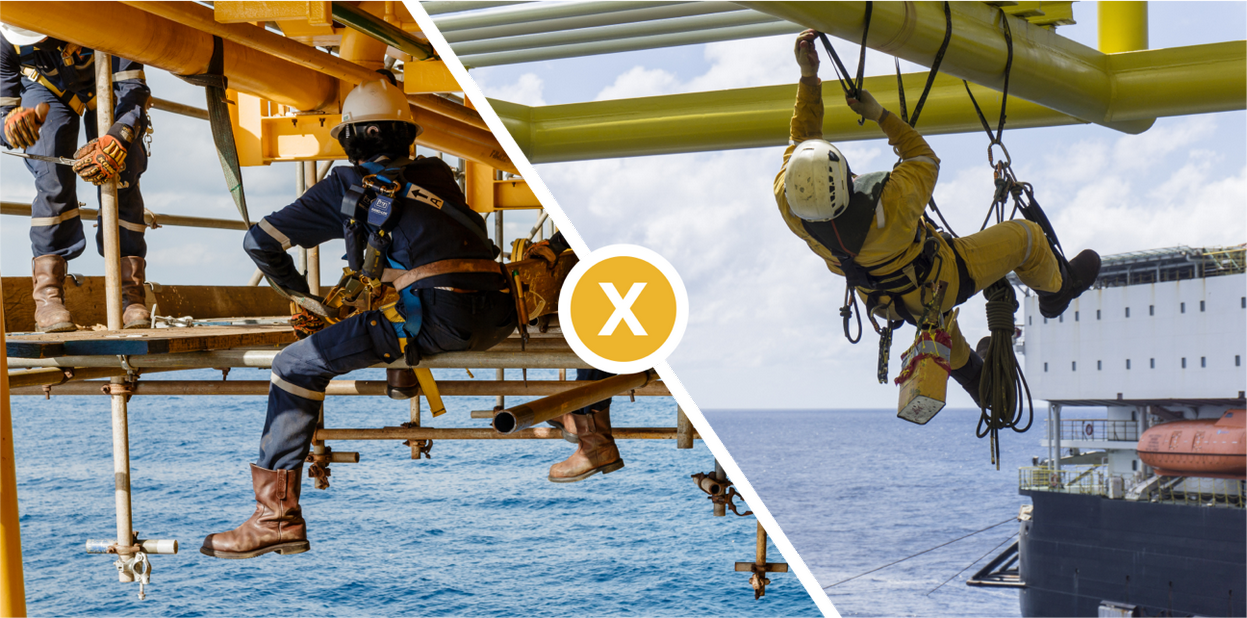
2021 - DBM Rio All Rights Reserved
 Case study 1 - Scaffolding vs. Industrial Climbing
01/03/2021
Case study 1 - Scaffolding vs. Industrial Climbing
01/03/2021
Industrial climbing is a technique of working at Heights with the most advanced techniques of access to elevated places and / or confined environments, using ropes and specific equipment for descending and ascending, according to the safety standards established by the Regulatory Norm. Recommended for services where there is a risk of falling and / or difficult access, industrial climbing enables the reduction of working time and the risk of accidents, thus generating increased productivity and reduced costs.
The method of assembling scaffolding, for operations in elevated locations, in addition to taking a long time and requiring a larger number of people to work, presents risks during and after its assembly, increasing the operational cost.
A study carried out by the technical team of ROPE STEEL, found that in a visual inspection operation in 5 pipes that descend parallel to a 100 meters high vessel, considering the assembly of a simple scaffold (4.0x2.0m), without taking into account the dismantling time of the scaffolding and without the requirement to assemble the platform around the scaffolding, to protect against falling objects, which can damage equipment and instruments below (in this case, the assembly of the platform would cost at least , 35%).
In the table below you can see the difference in time and in the number of staff and professionals needed to carry out the visual inspection in the 5 pipes, note:

Based on the table above, if we were to inspect the pipes that descend along a 40m e = 3m tower, where they are distributed in 1/2 perimeter of it, would we use the scaffold for this task?

The graph above shows a comparison between scaffolding and industrial mountaineering, taking into account a structure (tower) of 50m. To learn more, read the case study by clicking here!

Specialist in inspection, installation, repair and maintenance of equipment, using rope access techniques and industrial climbing and drones.
